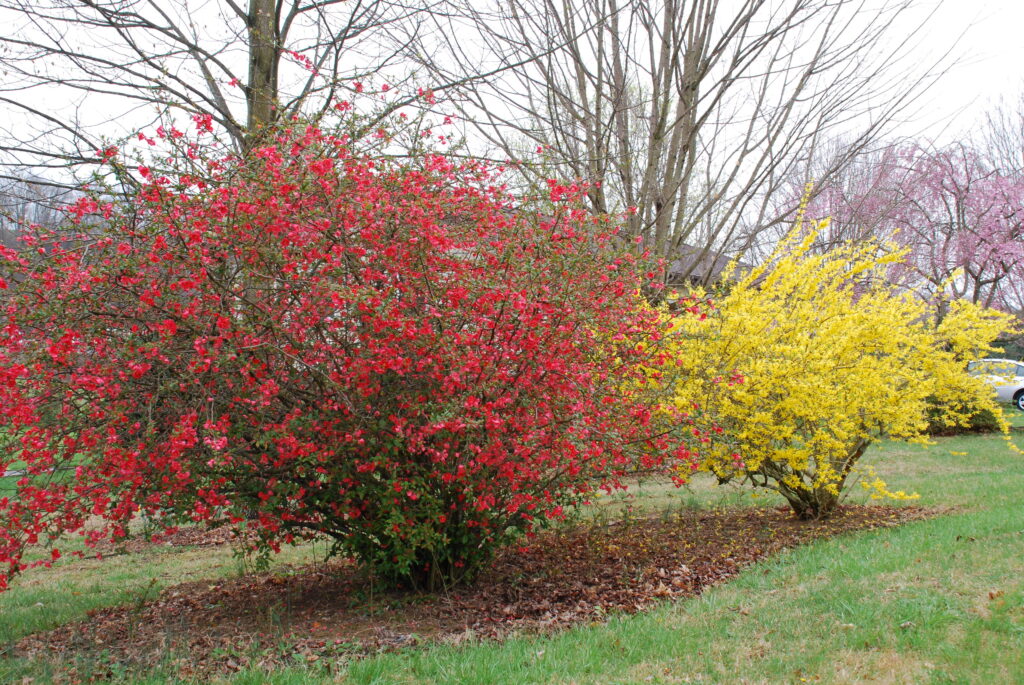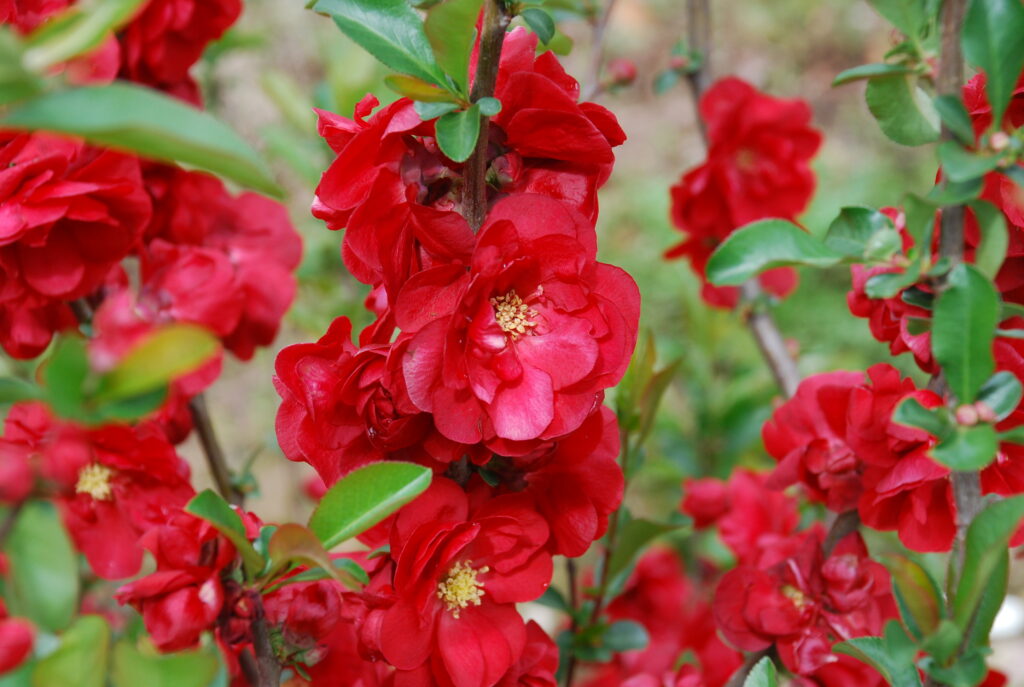
Flowering Quince (Chaenomeles speciosa) is a deciduous shrub in the Rose (Rosaceae) family and related to apple and pear (Zones 5-9). It is native to China and is relatively easy to grow. Plant quince in moist, well-drained soil; it flowers best in full sun but is moderately shade tolerant. Feed quince shrubs annually in early spring before new growth emerges with a slow-release fertilizer.
Flowering quinces offer multi-seasonal interest. Red, orange, pink, or white flowers (depending on variety) appear around the same time as spring crocus, hyacinths, and early tulips are also beautifying gardens. Flowers are glorious over 10 to 14 days. Blooms, as large as 1.5 inches in diameter, either appear singly or in clusters of 2-4. Several months later, the 2.5 inch long yellow-green quince fruits ripen.
Harvest fruits when they turn from pale green to yellow; they’re usually too hard to eat raw and bitter tasting. Harvest them and bring indoors to ripen. Fruits bruise easily. Store quinces on trays, not touching each other, in a dark, cool spot for 6-8 weeks before using. Also store quinces away from apples. Quince fruits soften with cooking, making tasty preserves and jellies or eat after fully ripened.
Pruning occurs after spring flowering to shape the shrub, to remove old dense wood, including all diseased and dead wood, and to stimulate the growth of flowering spurs for the next year. Be careful of their dense spiny wood.
C. speciosa is a tough, hardy plant that would make a great informal hedge. It is moderately salt-tolerant, and in comparison, C. speciosa grows more upright than its relative C. japonica. In general, quinces dislike high pH (alkaline) soils.
Quinces are easy to transplant. Pest and disease problems need to be considered, particularly on old fashioned varieties which were susceptible to fire blight. Modern day cultivars are highly resistant to fire blight disease. Aphids can be a problem on stressed plants.

Double Take series: ‘Scarlet Storm,’ ‘Orange Storm,’ and ‘Pink Storm’ grow to 5 feet high with double flowers of scarlet, orange, or pink. Branches are covered with blooms. Shrubs are shorter overall, do not produce fruits, and are largely thornless. Early arriving butterflies and hummingbirds will visit the early flowers.
Older varieties such as Super Red, Toyo-Noshiki, and Texas Scarlet are spotted in older landscapes as tall 8-10 feet hedges. Beware of their sharp barbed thorns.
Alternative: C. japonica grows only 2-4 feet tall with salmon to orange-colored flowers outward.

 Posted in
Posted in 
